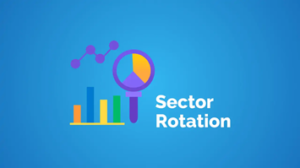Do you want a steady income stream from your investments? Managing a dividend stock portfolio can lead to growth and financial stability. In this post, we’ll discuss strategies to build and maintain a successful dividend portfolio. You’ll learn how to select the right stocks, maximize returns and balance risk to make sure regular cash flow.
No matter if you’re an experienced investor or just starting out, this guide will empower you to get your financial goals and make right investment decisions. Let’s dive into the world of dividend investing for income!
What is Dividend Investing
Dividend investing is a strong strategy for generation of passive income and long-term building wealth. Let’s explore the important concepts and advantages of this method.
What Are Dividends?
Dividends are regular payments companies make to their shareholders, usually sharing profits. These payouts come in different forms:
- Cash dividends – These are most common type of dividends which are directly paid to the shareholders in cash.
- Stock dividends – Extra shares that are given to current shareholders.
- Special dividends – One-time payments that are resulted from asset sales and additional profits.
Dividends reward shareholders for their investments in the company. When declared, companies set record and ex-dividend dates to determine eligible shareholders. This allows investors to steadily receive a portion of earnings and create reliable income.
Benefits of Dividend Investing
Dividend investing has many advantages for investors:
- Qualified dividends are taxed at lower rates than ordinary income.
- These stocks usually experience less price changes compared to growth stocks.
- Regular dividend payments provide a reliable source of passive income. .
- Dividend-paying stocks can also increase in value over time.
How to Build a Dividend Portfolio

Building a strong dividend portfolio requires careful planning and strategic decisions. Let’s examine the key steps in this process.
Set Investment Targets
When managing a dividend stock portfolio It’s very important to have clear goals. Find your income requirements and maintain a balance between income and growth potential. Consider your risk tolerance and time period to match your portfolio with your comfort level and financial goals.
Select Dividend Stocks
Selecting the right dividend stocks means assessing key metrics such as payout ratio, dividend growth rate. Focus on firms that have strong finances and steady dividend histories.
Evaluate fundamentals such as debt levels and earnings growth. Diversify your portfolio across industries and sectors to improve portfolio stability and reduce risk tolerance.
Dividend ETFs and Mutual Funds
Dividend ETFs and mutual funds provide an effective way to diversify your portfolio. These funds give exposure to a wide range of dividend-paying stocks and decrease individual stock risk.
Compare costs and holdings of popular dividend funds to find options fitting your investment goals and strategy.
How to Manage Your Dividend Portfolio

Effective management of your dividend portfolio is important for long-term success. This section explores aspects of portfolio upkeep and optimization.
Monitoring and Rebalancing
Regularly monitor your portfolio’s performance to make sure it’s according to your investment goals. Assess the growth potential and stability of each holding’s dividends.
Rebalance periodically to maintain your desired asset allocation and adjust it according to the changing market conditions. This proactive strategy helps to increase your portfolio’s income and risk management.
Reinvesting Strategies
Consider these strategies for reinvesting your dividend money:
- Dividend Reinvestment Plans (DRIPs): Automatically put dividends into buying extra shares.
- Cash dividends: Take payments as cash for immediate income or invest elsewhere.
- Manual reinvestment: Selectively reinvest dividends in high-potential or undervalued stocks.
When selecting a reinvestment strategy, consider your taxes, overall investment goals and income requirements..
Tax Considerations
Knowing the tax considerations is very important for getting the most from dividend investing. Qualified dividends have better tax treatment than non-qualified dividends.
Choose high-dividend stocks in IRAs to decrease taxes. Use tax-loss harvesting and other ways to effectively manage total tax liability.
Optimizing Income Generation
To maximize income potential from your dividends, use advanced strategies and tools for better dividend yield and cash flow control.
Dividend Capture Strategies
Dividend capture means buying stocks right before their ex-dividend date and selling them soon after to collect the dividend payment. Here’s how it works:
| Pros | Cons |
| Potential for frequent income | Higher trading costs |
| Flexibility in stock selection | Short-term capital gains taxes |
| Opportunity for price appreciation | Risk of price decline after ex-dividend date |
To utilize a dividend capture strategy, carefully record dates and track ex-dividend and think about potential price changes and transaction costs.
Create a Dividend Calendar
Create a dividend schedule to track when your holdings pay out. This tool helps manage cash flow and balance monthly income streams.
Use spreadsheets and investment software to show and organize your dividend payments over the year to make sure steady income distribution.
Yield Enhancement Techniques
Try these ways to grow your portfolio’s yield:
- Balance high-yield investments with lower-risk options for stable income.
- Write covered calls on dividend stocks to bring in extra income.
- Add REITs and preferred stocks for potentially higher yields.
Carefully consider the risk-reward when using these strategies to ensure they match your overall investment goals.
Risk Management in Dividend Investing
While dividend investing can give stable income, effectively managing associated risks is essential. This section explores important risk management concepts for dividend investors.
Avoid Dividend Traps

Be careful of unstable high dividend yields which may show financial problems. Examine warning signs in financials such as growing debt levels or falling revenues.
Pay attention to dividend paying ratios to make sure companies can maintain their payouts. Complete research helps to avoid stocks with good yields but poor long-term potential.
Diversification Strategies
Effective diversification is very important to manage risk in your dividend portfolio:
- Spread investments across different industries and sectors to decrease concentration risk.
- Balance dividend stocks with other assets such as growth stocks or bonds to build a well-rounded portfolio.
- Consider geographic diversification by incorporating international and domestic dividend-paying stocks.
This strategy helps reduce the effect of individual company problems or sector-specific declines on your overall portfolio performance.
Adapt to Market Changes
Stay flexible and fast to respond to market conditions. Be ready to adjust your strategy during downturns or due to company events.
Closely track holdings and keep informed on trends or news. This proactive method allows you to make timely choices to save income.
Measuring and Evaluating Portfolio Performance
It is very important to regularly check dividend portfolio performance for long-term success. This section covers main metrics and practices to assess your investment strategy.
Key Performance Metrics
Monitor these key indicators to measure effectiveness:
- Total return (dividends + stock growth)
- Dividend growth rate
- Yield on cost
Benchmarking

Compare relevant dividend indexes to gain perspective on your results. Set realistic investment goals for income and growth on the basis of your investment strategy and market conditions.
This comparison helps find areas for improvements and validate successful approaches.
Regular Portfolio Review
Periodically assess your holdings to make sure that they still meet your investment criteria. Make the right decisions to sell or buy stocks to increase your portfolio.
Adjust your investment strategy as required for market conditions or changing goals to maintain a dynamic and effective dividend portfolio.
Advanced Dividend Portfolio Strategies
For seasoned investors who want to improve their dividend investing strategy, consider these advanced approaches to potentially increase your returns and income.
Dividend Growth Investing
Focus on stocks with a history of steady dividend hikes that’s also called Dividend Kings or Dividend Aristocrats.
This strategy capitalizes on the power of compounding through rising dividends payments over time. Identify potential long-term dividend growers by strong financials and stable payout ratios.
Sector Rotation for Income

Strategically allocate to high-yield sectors on the basis of market conditions and economic cycles . Balance cyclical dividend stocks (e.g. financials, consumer discretionary) with defensive options (e.g. utilities, consumer staples) to maintain steady income across market conditions.
Adapt sector weights as economic conditions change to increase income potential.
International Dividend Investing
Explore opportunities in foreign dividend-paying stocks to potentially get higher yields and diversify your income sources. Consider currency fluctuations and withholding taxes.
Use international dividend ETFs or American Depositary Receipts ADRs for easier access to simplified tax reporting or foreign markets.
Conclusion
Managing a dividend portfolio for income needs a strategic approach to combine regular monitoring, diversification and careful stock selection. By using the techniques discussed in this guide, investors can build a strong portfolio generating steady income while managing risk. Regularly review and adjust your investment strategy to align with your financial goals and market conditions.
For further optimization, explore our blog on “Tax-Efficient Portfolio Management Strategies.” This guide provides valuable insights to minimize tax impact and increase after-tax returns which improves your dividend portfolio performance.


